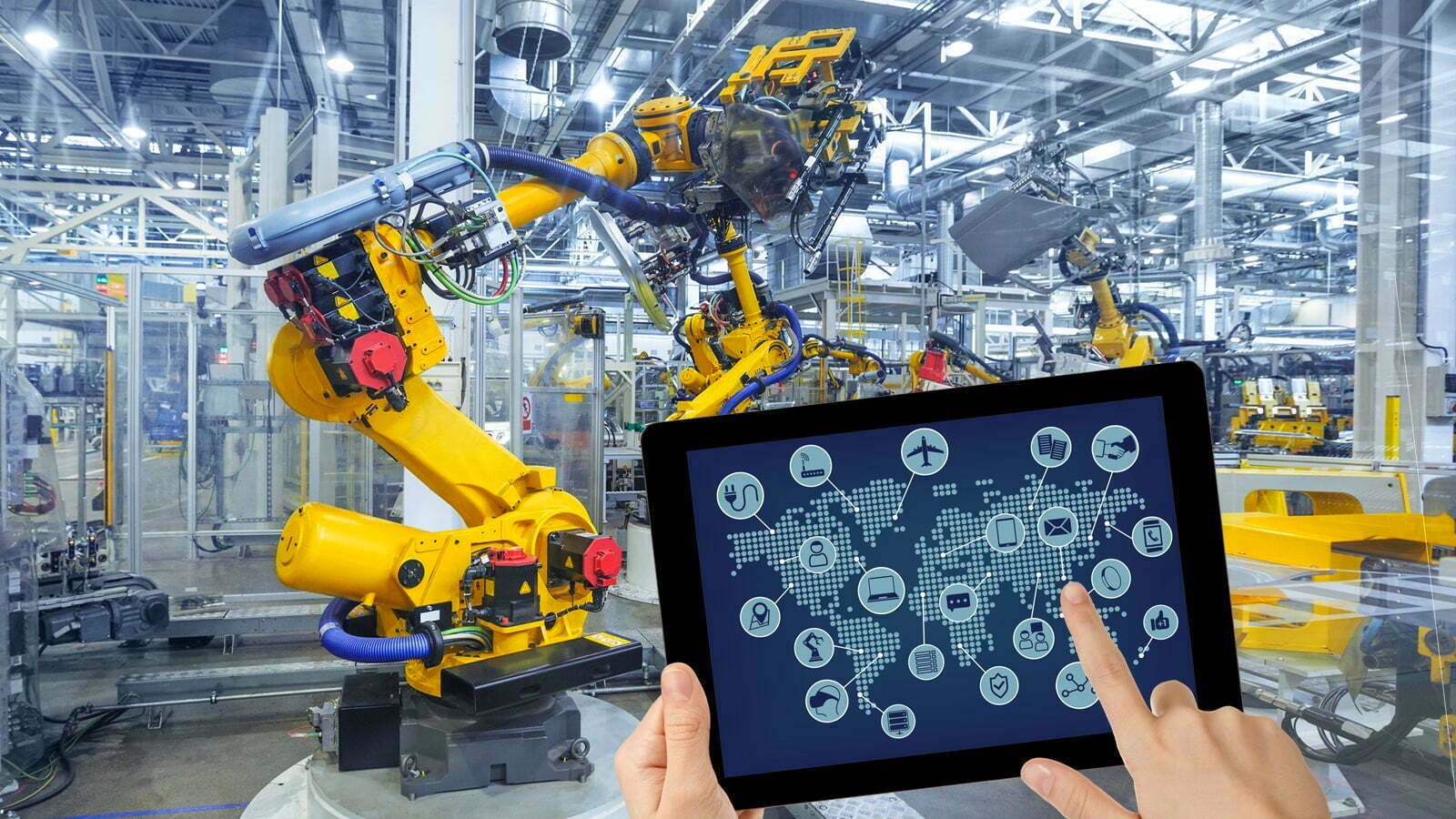
which REALLY was a revolution, and, among others thanks to invention of steam machines, the usage of water and steam power and all sorts of other machines, would lead to the industrial transformation of society with trains, mechanization of manufacturing and loads of smog.
is typically seen as the period where electricity and new manufacturing ‘inventions’ which it enabled, such as the assembly line, led to the area of mass production and to some extent to automation.
had everything to do with the rise of computers, computer networks (WAN, LAN, MAN,…), the rise of robotics in manufacturing, connectivity and obviously the birth of the Internet, that big game changer in the ways information is handled and shared, and the evolutions to e-anything versions of previously brick and mortar environments only, with far more automation.
we move from ‘just’ the Internet and the client-server model to ubiquitous mobility, the bridging of digital and physical environments (in manufacturing referred to as Cyber Physical Systems), the convergence of IT and OT, and all the previously mentioned technologies (Internet of Things, Big Data, cloud, etc.) with additional accelerators such as advanced robotics and AI/cognitive which enable Industry 4.0 with automation and optimization in entirely new ways that lead to ample opportunities to innovate and truly fully automate and bring the industry to the next level.

The injection of AI, hyper-connectedness and data analysis into how things, machines, communicate, act and lead to actionable insights with an omnipresence of the Internet of Everything in virtually each piece/machine of the Industry 4.0 dream is one thing, the convergence of man and machine (or technological extension) is still a bit further away and it’s so complex and will lead to so many more debates (also ethical) that it’s already called the fourth platform.
These digital technologies include the following:
Simulation
Horizontal and vertical system integration
Autonomous Robots
Additive Manufacturing
The Cloud
The Industrial Internet of Things
Big Data and Analytics
Cybersecurity
Augmented reality
We’ve mentioned some benefits, risks and challenges earlier in this overview but let’s look a bit closer at some of the main advantages. Several of them are also explored more in depth in other articles on this site.
The essential goal of Industry 4.0 is to make manufacturing – and related industries such as logistics – faster, more efficient and more customer-centric, while at the same time going beyond automation and optimization and detect new business opportunities and models.
Most of the benefits of Industry 4.0 are – obviously – similar to the benefits of the digital transformation of manufacturing, the usage of the IoT in manufacturing, operational and business process optimization, information-powered ecosystems of value, digital transformation overall, the Industrial Internet and many other topics on our website. However, let’s summarize a few of the key benefits of Industry 4.0.
As mentioned in the section on the state of Industry 4.0, optimization of processes and of productivity is the first benefit that manufacturers see.
It’s also one of the first goals of Industry 4.0 projects. In other words: saving costs, increasing profitability, reducing waste, automating to prevent errors and delays, speeding up production to work more in real-time and in function of the overall value chain, where speed is crucial for everyone, digitizing paper-based flows, being able to intervene faster in case of production issues and so forth.
It’s the low hanging fruit, yet important. On top of the research from BCG we mentioned earlier, the signs that investments are done in these areas first are clear. Again, it’s not a coincidence that, from a spending perspective, the number one use case in which manufacturers invest their Internet of Things (IoT) budgets is manufacturing operations (a whopping $102.5 billion on a total of IoT $178 billion across all manufacturing use cases in 2016). Industry 4.0 offers various solutions to optimize, from optimized asset utilization and smoother production processes to better logistics and inventory management.
We mentioned that customers want speed. However, that doesn’t mean they are ready trade quality for speed, well on the contrary.
If you have everything in your production system and its broader environment hooked up with smart sensors, software, IoT technologies, systems of insight AND the customer, you can also enhance quality of your products. Automation definitely plays a big role here and so do the typical components of cyber-physical systems (more below) and the Internet of Things whereby quality aspects can be monitored in real-time and robots reduce errors.
On the flip side and one of the risks and challenges to tackle, as mentioned earlier: the more you automate, the less work for people, in theory. And the same goes for other mentioned benefits such as maintenance (the less you need engineers for support, the less support engineers you need). It’s a dilemma and known issue which we’ll cover later. In the meantime do know that robots are not going to take all human jobs over soon. Ample companies have increased the usage of robots and at the same time hired more. The reason we mention it in the context of quality is that this is certainly one area where you see cobots popping up (cobots is a fancy term for advanced collaborative robots or put more simply: robots that fit a collaboration between man and machine).